Star moss (also known as Sidewalk moss, Hairy screw moss, Tortula moss, and Twisted moss) is a decorative plant we can use both submerged and emerged in the aquarium.
It will survive for up to 4 months submerged in an aquarium but can live longer if you grow it as a garden plant.
Either way, this is an exotic plant that can give you a star-like appearance for your enclosures.
In this star moss care guide, we have gathered everything you need to know to keep them in an aquarium.
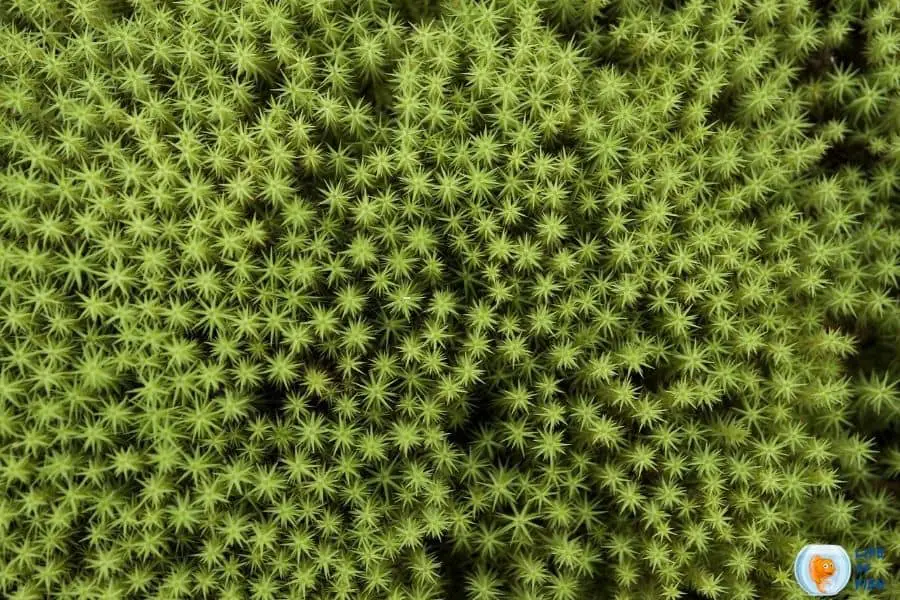
What is star moss?
Jump To
- 1 What is star moss?
- 2 How to identify?
- 3 Is star moss easy to grow?
- 4 Distribution & natural habitat
- 5 One look care guide
- 6 Aquarium care requirements
- 7 How to keep star moss alive
- 8 How do you propagate star moss?
- 9 Star moss tankmates
- 10 Diseases and common problems, treatment
- 11 How to attach star moss to substrates
- 12 Star moss turning brown (cause and treatment)
- 13 How does star moss grow?
- 14 How do you get rid of star moss?
- 15 How do you identify star moss?
- 16 Can star moss survive underwater?
- 17 Where can I buy star moss?
- 18 Conclusion
Scientifically named Tortuola Ruralis, Star Moss is a cosmopolitan plant that belongs to the Pottiaceae family.
It can survive in extreme climate conditions like ice-cold and highly drought weather. Therefore you can find this plant in arctic, boreal, temperate, and desert regions.
Star moss is an essential plant in its natural habitats as it helps stabilize soil and reduce erosion.
Star moss is not an actual aquarium plant and can survive for only about three months submerged. But, this plant is trendy among aquarists because of its star-like structure.
How to identify?
Identifying moist star moss is easy as the leaves are arranged rose-shaped and have a star-like appearance. however, the appearance of star moss changes according to the environment and moisture level.
Generally, star moss forms a bunch of versatile stems up to 4cm tall. It attaches itself to surfaces using rhizoids and has a slow growth rate.
When this plant receives an adequate amount of water, the leaves become bright green and loose. But when the plant dries, the leaves wrap around the stem and become reddish-brown.
Is star moss easy to grow?
Yes. Although star moss is a slow-growing plant, it is extremely easy to grow. It can survive a wide range of climates and has the ability to stay dormant until conditions become suitable.
When star moss dries out, it will remain alive but will not grow until it gets adequate water. Therefore, this plant can grow rather large with minimum care.
Distribution & natural habitat
Star moss is a moss species that has a cosmopolitan distribution. It is native to North America, South America, the Pacific, Europe, Asia, the Middle East, North Africa, South Africa, and Australia.
It can grow in various climates, including the Arctic, boreal areas, temperate areas, and deserts, and it grows in different habitats such as tundra, coniferous forest, grassland, and sagebrush.
Unlike other moss types, you may find star moss throughout the world in various climates and habitats.
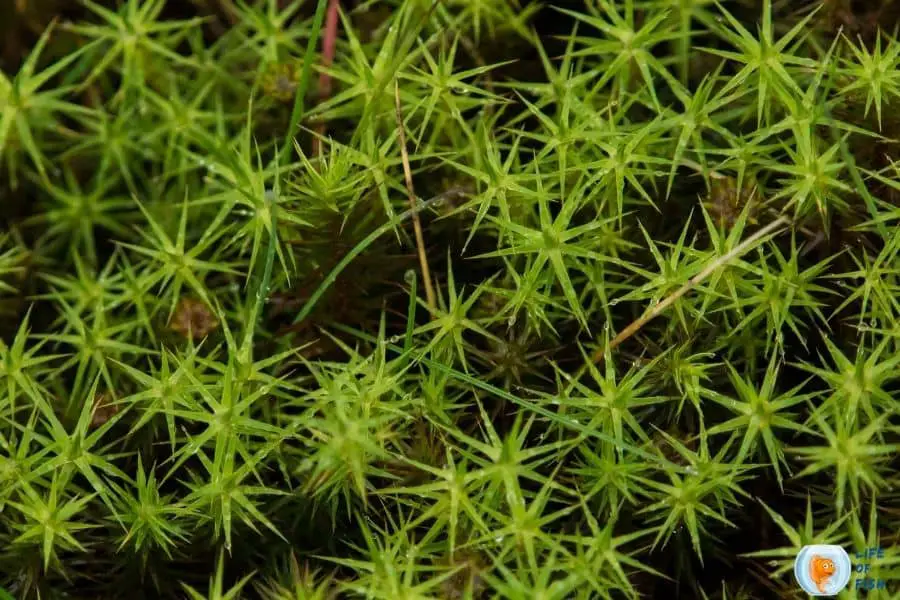
One look care guide
| Scientific name | Tortuola Ruralis |
| Common name | Star moss Sidewalk moss Hairy screw moss Tortula moss Twisted moss |
| Care level | Easy |
| Native to | Cosmopolitan. Distributed worldwide. |
| Type | Moss |
| Color | Bright green when moist, reddish-brown when dried up |
| Tank size | Any size. Grow well when partially submerged. |
| Preferred temperature | 73 – 860F |
| Other water parameters (ammonia ,ect) | pH level 5- 7.5 |
| Preferred salinity | No salinity. Freshwater plant. |
| Size | 4 cm erect |
| Growth rate | Slow |
| Recommended tank mates | Any plant. No plant-eating species. |
| Fertilizers and CO2 | Not required |
| Propagation | Through moss pieces |
Aquarium care requirements
Star moss does best when partially submerged in aquariums. You can keep it fully submerged, but the plant will die after about 3 to 4 months.
So, keep this in mind when choosing star moss for aquariums. To avoid losing the plant, you can save a part of the plant in a terrain-based enclosure.
So, when the plant in the aquarium dies, you can replace it with the moss you grew outside.
Lighting
Star moss does best in low to moderate light conditions. Direct contact with sunlight will dry off the plant and change the color.
So, if you grow the plant partially submerged, do not expose your aquarium to direct sunlight.
Fertilizers & substrates
Since this is a hardy plant that grows in different climates and habitats, star moss can survive in any choice of substrate.
Therefore, adopt the substrate choice for the requirement of your fish and other plants.
Star moss doesn’t really need any fertilizers to thrive. However, if you feed them with fertilizers, the moss will grow faster.
Can star moss grow on sand
Yes. Star moss can grow on almost any substrate but may try to float if you do not attach it to a weight and keep submerged. If you grow star moss in a terrarium, it will do fine in the sand.
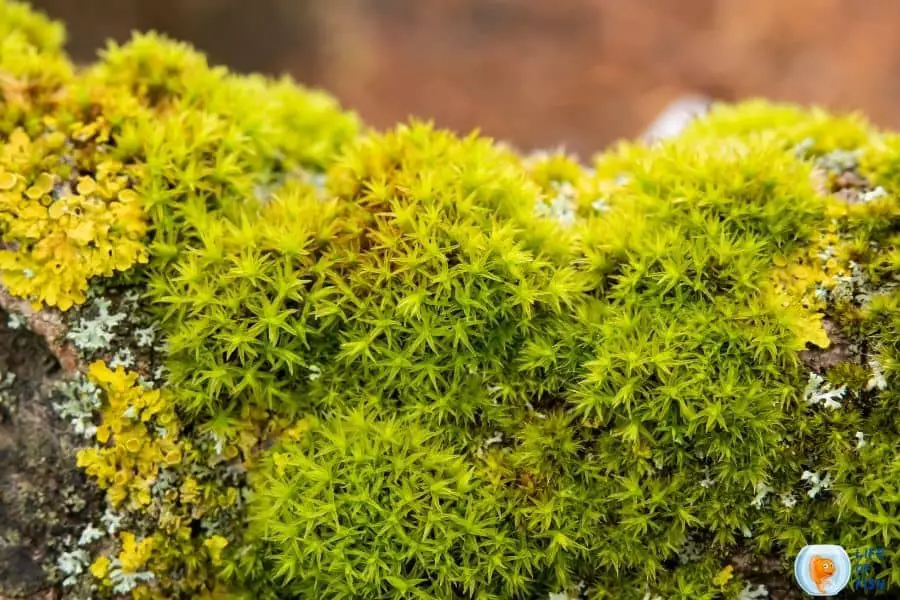
Water quality
Star moss is a freshwater plant. It can not survive in saltwater. It prefers slightly acidic water but can live in lightly basic and neutral water. The optimum pH level for this plant is 5- 7.5.
Temperature
Star moss is adoptive to various temperatures but does best in between 73 and 86 degrees Fahrenheit.
Placement
Since this is not an aquatic plant, we recommend keeping this plant partially submerged or as a terrain-based plant around the aquarium.
This way, you can grow star moss for a long time, but you can also temporarily grow this moss inside the aquarium.
It will survive for up to 90 days, fully submerged. If it is kept for more, the moss will die. So, you need to remove the plant from the aquarium before it dies to keep it safe.
Can you float star moss
Yes. You can keep star moss as a floating plant in your aquarium. Actually, this is the best way to grow star moss in an aquarium.
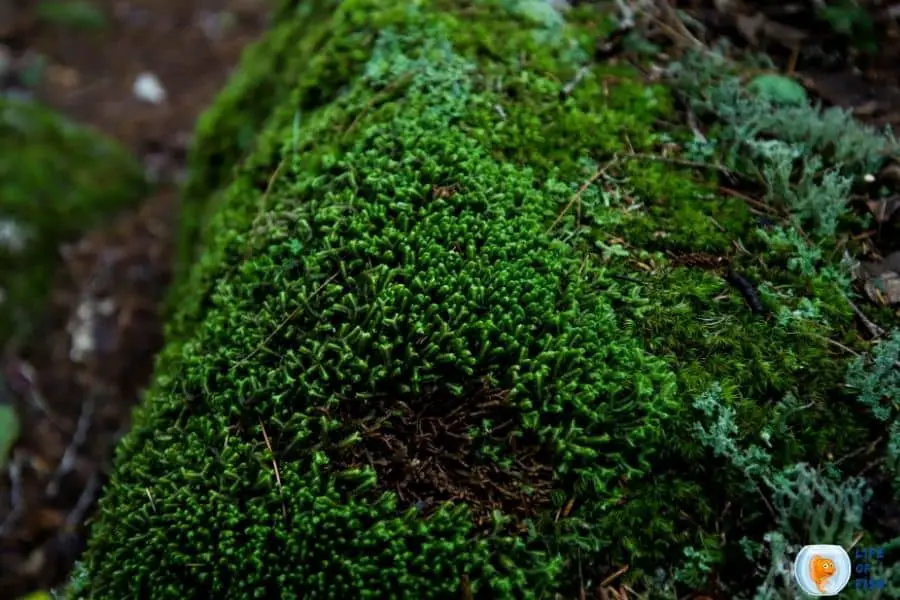
How to keep star moss alive
Keeping a star moss submerged in an aquarium can be a challenge. But if you follow specific steps, you can keep star moss alive for long in an aquarium.
- Do not keep star moss fully submerged for long periods of time.
- Remove the plant every once and then from the aquarium and let it grow outside for some time.
- Then again, reintroduce the plant to the aquarium.
By following these steps, you can keep star moss alive for longer in an aquarium.
How fast does star moss grow
It is a slow-growing plant but will grow very large if you let it. It requires minimum water and fertilizers and will not die even in drought conditions.
When the plant gets enough water, it starts to grow back. So, you don’t need to worry about this plant if you couldn’t water it for several days.
How to trim star moss
As it doesn’t grow taller like other mosses, you may not need to trim this plant at all. But, if you prefer trimming anyway, you can trim with a scissor, like any other plant.
Cutting off pieces of this moss will not harm the plant or stop growing in any way.
Does star moss need cO2?
It doesn’t require CO2 to grow. But, if you provide CO2 to this plant, it will enhance the growth rate.
Can star moss grow out of water?
Yes. Star moss can grow well out of water. It is, in fact, a terrarium plant that grows in various climates and habitats.
How do you propagate star moss?
Propagating star moss is easy. You will have to divide an existing moss piece into individual chunks and attach it to the surface you prefer.
It will take more time than other mosses to grow, but it doesn’t die because of a lack of water.
However, the best way to water the plant is by spraying or misting the plant periodically.
Life cycle
It is a long-living plant if you grow it in terrain-based enclosures. It can even recover after desiccation after about 3 to 4 years in the “sleep” stage.
But, if you keep this plant fully submerged, it will die after about 90 days.

Star moss tankmates
As it is a plant, choosing tank mates is pretty straightforward.
Fish
It is better to house carnivore or omnivore fish that doesn’t have an appetite to eat plants. It is a slow-growing plant that takes more time to grow.
If housed with plant-eating species, the fish will finish eating this plant before it grows.
Plants
It will do fine with any other aquarium plant as it does not require fertilizers and CO2 to thrive. And also, the shade does not bother this moss as it prefers low light conditions.
Other organisms
You can keep it with other species as long as they do not consume this plant. Star moss is not categorized as a toxic plant for animals.
Diseases and common problems, treatment
It is one of the most versatile and resilient moss species in the world. Therefore, there are no known diseases for this plant.
It will even survive in desarts and arctic-alpine tundra but will not live for long in the water. So, if you want this plant to thrive, you have to keep this plant emersed from the water surface.
The common problem of star moss arises when it becomes dry in dry conditions. It is highly likely flammable when it dries out.
So, if you come across a totally dried-up plant, do not light up with fire (especially in their natural habitats.)
How to attach star moss to substrates
You can use techniques used to attach other aquatic mosses. You can tie the moss with thread or yarn or use plant glue to stick the plant to the surface.
Rock
Attaching star moss to rock is pretty straightforward. Using a thread or specifically made “plant-tieing yarn,” tie up the piece of moss to the rock. It is much easier if you use “plant glue” and glue it to the rock.
Wood
Just like the methods used to attach the moss into rocks, you can use either thread or “plant glue” to attach the moss plant to the wood.
Sand
Attaching the plants to the sand substrate in the aquarium is much trickier as this plant tends to float in the water.
You will have to attach the moss to several rocks and then put the rocks where you prefer to keep them.
However, the easiest way is to make a carpet separately with a net and put the net on the sand substrate with some rocks.
That way, you can take the plant back after about two to three months to grow generally on the floor.
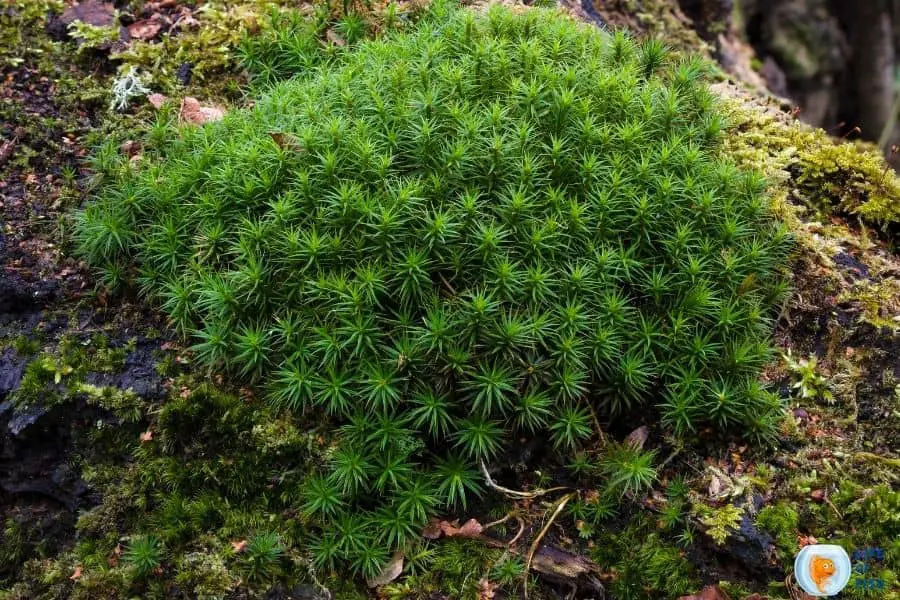
Star moss turning brown (cause and treatment)
If the star moss is turning brown while submerged, it means the plant is dying. Take the plant back to the ground and let it dry.
If it turns green again, there is a chance to survive. Do not put the plant back into the aquarium soon after it turns green. Let the plant grow on the ground for a while.
This plant is not supposed to be an aquatic plant. Therefore, it needs to live in the foreground for a while to survive.
If it turns brown when on the ground, it means the water supply is not enough. Although it turns brown, this moss will not die when it is not submerged in the water.
So, you don’t have to worry about this situation much as it is typical for this plant. In this case, watering the moss will give its life back, and the plant will turn green again.
Related questions
How does star moss grow?
It forms relatively large, loose to dense tufts with about 4cm erect stems. These stems get anchored to the soil by rhizoids, and these rhizoids absorb nutrients from the attached surface for growing the plant.
It takes some time for this plant to grow, but it doesn’t need much care to thrive.
How do you get rid of star moss?
If the plant is housed inland, it may not be easy to get rid of it. This plant can survive in most drought conditions.
So, drying the plant will not work. But, this is not a dominant species.
You can remove the plant while there is moisture or simply make a muddly puddle for about three months (which is not practical in a home garden).
If the star moss is submerged in the aquarium, there is not much to do by your side. The plant will die naturally after about three months.
How do you identify star moss?
They have pointy, star-like leaves that gathered up in a rose-like shape.
Can star moss survive underwater?
They can survive underwater only for a short time span. After about 90 days, the moss will die.
Where can I buy star moss?
You can buy them from a terrarium plant shop, aquarium shop, and online. Although this is a versatile and resilient plant, you may not often find this plant in these shops.
Conclusion
Star moss is one of the easiest growing plants in a terrarium. But, it will struggle when housed in an aquarium and die within 3 to 4 months.
If you wish to keep this plant in an aquarium, you should grow it partially submerged.
And also, if you want to keep the plant alive, never keep this moss fully submerged for an extended period of time.
Read Next: Marimo Moss Carpet By Marimo Moss Balls | 16 Amazing Facts |
